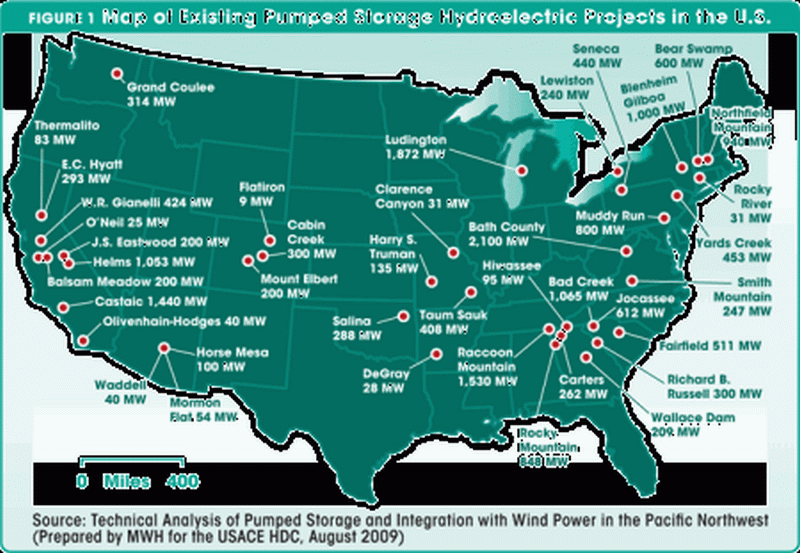GENERATION OF UNLIMITED ELECTRICAL POWER WITHOUT USING HYDRO-CARBONS OR NUCLEAR ENERGY
Sounds almost to good to be true, doesn't it? So how could it be done?
I grew up in what is called the Coulée Region of Wisconsin where the Mississippi river flows south. Along the shores of Wisconsin, Iowa, and Minnesota where there are 800 to 1200 foot bluffs, separated by some truly long valleys. What if, a series of 600 foot dams were put at the mouth of a number of these valleys which are not of any significant use. If you utilized wind energy to power water pumps and fill these reservoirs with water borrowed from the Mississippi, It wouldn't take long to store away trillions of gallons of water. When, the right point is reached, start a controlled return of the water through hydro-electric generators back into the Mississippi.
One of the current problems of utilizing wind generated electricity is that the wind is not dependable, and there is no current potential energy storage system in place to store trillions of watts of potential energy. Well, there is now, with this simple idea of using coulées that are filled with water by wind generated electricity.
OK, simple idea. Technology has been available for 30 years to make this a reality. Why are we still relying of coal and nuclear generation plants for electricity.?
It does get better. Any of you ever seen the Columbia River George between Washington and Oregon? Here, the cliff faces climb to over 2000 feet. Some of the valleys stretch 10s of miles. A few reservoirs here could potentially store an astronomical amount of water borrowed from the Columbia River. Winds sometimes blast through the George at speeds greater then 50 miles per hour. Are you getting the idea of what this simple approach could do?
I have looked this over. I do not see any major reputation damaging statements. It appears to be technically feasible. What do you think?


![[idea] [idea] [idea]](/data/assets/smilies/idea.gif)
![[r2d2] [r2d2] [r2d2]](/data/assets/smilies/r2d2.gif)